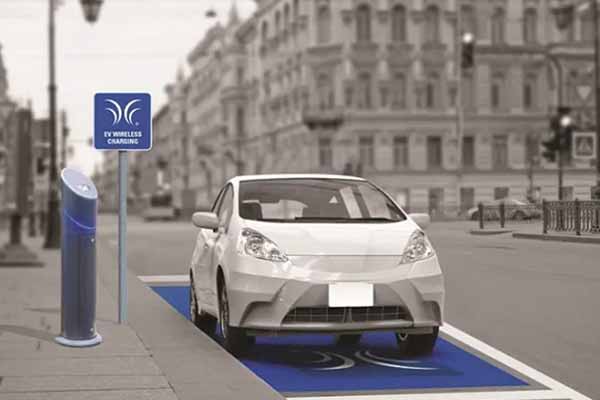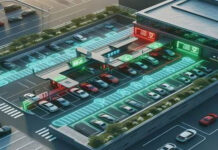Charge your EV without plugging in
The development of wireless charging systems for electric vehicles (EVs) has slowly picked up momentum over the past decade. With wireless charging systems properly integrated into vehicles and situated strategically around a city, as well as at owners’ homes, there is the promise of never needing to plug in an EV again. Drivers should simply park as usual over a coil placed on the ground or buried in it. There are a number of companies jostling to be the dominant player in the wireless EV charging space including WiTricity, Hevo, Wave, IPT Technology, Momentum Dynamics and many more. In reality, each competitor’s systems are intended for different applications and there is enough business potential for everyone in this emerging market.
The basic principle behind the technology is electromagnetic induction. In particular, the use of resonant inductive coupling which involves adding a capacitor to each induction coil to create two resonant circuits (LC circuits) with a specific resonance frequency. A fluctuating magnetic field is created by an alternating current operating at this resonant frequency in the transmitting coil. This magnetic field then induces current in the receiving coil. In this way, the energy transfer is accomplished wirelessly. In some instances, this technology is also referred to as “magnetic resonance”, and it is often contrasted to “induction” for its ability to efficiently transfer power over a range of distances and with positional and orientational offsets.
The wireless charging system consists of three main parts: wall box, ground assembly (GA), and vehicle assembly (VA). Research found that about 70% of the cost is associated with the ground assembly, where electricity from the AC mains is first converted to DC using rectifiers and then converted to high frequency AC using inverters. On the vehicle side, a secondary rectifier is needed to convert the transmitted AC into DC for powering the vehicle’s battery. The report addresses the ground and vehicle-based assemblies with a dive into materials and components. A TCO comparison with plug-in infrastructure alongside overall system efficiency comparisons are some of the highlights.
Current state of the wireless EV charging market
Wireless charging standards had been in development for over a decade before being finalised and released in 2020. With the SAE J2954 standard now agreed for consumer EVs, the technology has the potential for widespread adoption.
The standard focuses on relatively low-power charging systems, at 3.3kW through to 11kW, with a 22kW level being worked on. This is aimed at static charging of cars at home or the office, or light trucks that charge overnight at their depot. However, installing a wireless charging system is an additional cost for the vehicle design, as a cable connector for plug-in charging is already a prerequisite. Installing wireless charging pads embedded in roads also brings an additional cost, as it includes a connection to the grid. Dynamic charging with specialised roads will follow for specific applications, with shuttles as an early opportunity. Included in this report are forecasts split by power level and static or dynamic applications.
The publication of the standard was a very important catalyst – many of the automotive manufacturers have since been working with their suppliers evaluating, developing, and refining wireless charging technologies. Companies like Hyundai, FAW and BYD are already offering factory-fitted wireless charging hardware from key players on select vehicle models. This report includes details on their systems, other engineered retrofits and some research institutions’ novel designs.

Future of wireless EV charging
The largest development goals for wireless charging are to increase power and efficiency whilst decreasing overall system cost. Currently, plug-in systems offer faster charging speeds at a lower cost in comparison to wireless charging.
Wireless EV charging will also be mission-critical to enable autonomy. Volkswagen and Hyundai have shown concepts that consist of wireless charging pads installed in parking spots. Automated valet parking could then allow their cars to find the nearest parking spot and begin charging their batteries, without any human intervention. Costs for static wireless charging units are also expected to decrease with larger volumes being manufactured post 2025.
Electreon sees even further into the future. The company are developing and testing wireless charging embedded in roadways, enabling vehicles to be charged while on the move. They claim that the batteries could then be smaller, and thereby overall vehicle weight and cost can be reduced. However, the infrastructure for electrifying roads is very expensive and scaling them up to several kilometres is a challenge with only a small percentage of vehicles currently on the road being able to benefit. Yet, demonstrations are underway globally with some European countries like Sweden, Germany, France, and Italy having ambitious targets to electrify thousands of kilometres of roadways.
Key Aspects
This report provides the following information:
Enabling technology, componentry breakdown, & performance analysis
- Detailed summaries of scientific principles enabling wireless power transfer (WPT)
- Comparison studies between inductive, magnetic resonance and capacitive charging.
- Analysis of coil topologies, pad design and electrical requirements.
- Comprehensive discussion of crucial materials used within pads including Litz copper wire coils, ferrite core structure and aluminium shielding.
- Performance comparison of different coil topologies and those used in industry.
- Exploration of dynamic wireless charging including infrastructure requirements, cost and scale challenges, and active projects within this space.
Player profiles, benchmarking and pilot project deployments
- Primary interviews with key companies including business models, financial details, product portfolios and deployment status.
- Benchmarking by power level and density, efficiency, air gap, and pad weight and size.
- Summary of demonstration projects globally with key lessons learnt and classification by technology readiness level (TRL).
Commercial operation analysis, safety metrics and standardisation
- Cost analysis including componentry cost, installation, and maintenance cost.
- Battery downsizing potential with sample data and supporting case studies.
- Opportunity charging battery health benefits.
- Automated valet parking (AVP) and wireless V2G possibilities.
- Detailed coverage of safety features including shielding, foreign object detection (FOD) living object protection (LOP).
- Standardisation status and outlook
10-year market forecasts & Analysis:
- By vehicle subsegments – private cars, commercial vans, commercial buses, commercial trucks, autonomous cars (robotaxis), autonomous shuttles, autonomous buses, and autonomous trucks
- By power level – <=22kW (low power) and >22kW (high power, up to 500 kW)
- By componentry – ground assembly and vehicle assembly
- By application – off-road static and on-road dynamic
- Global wireless electric vehicle (EV) charging infrastructure market value
- Material demand for copper














